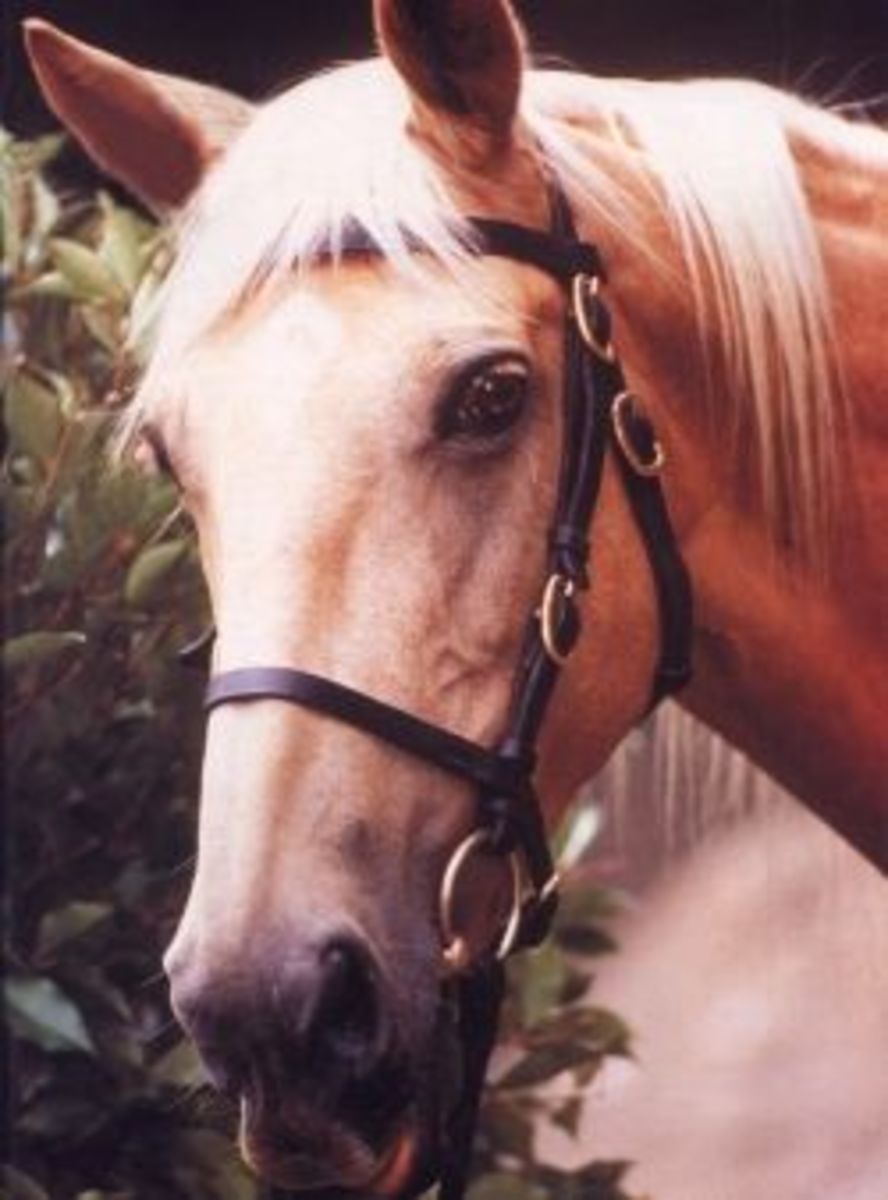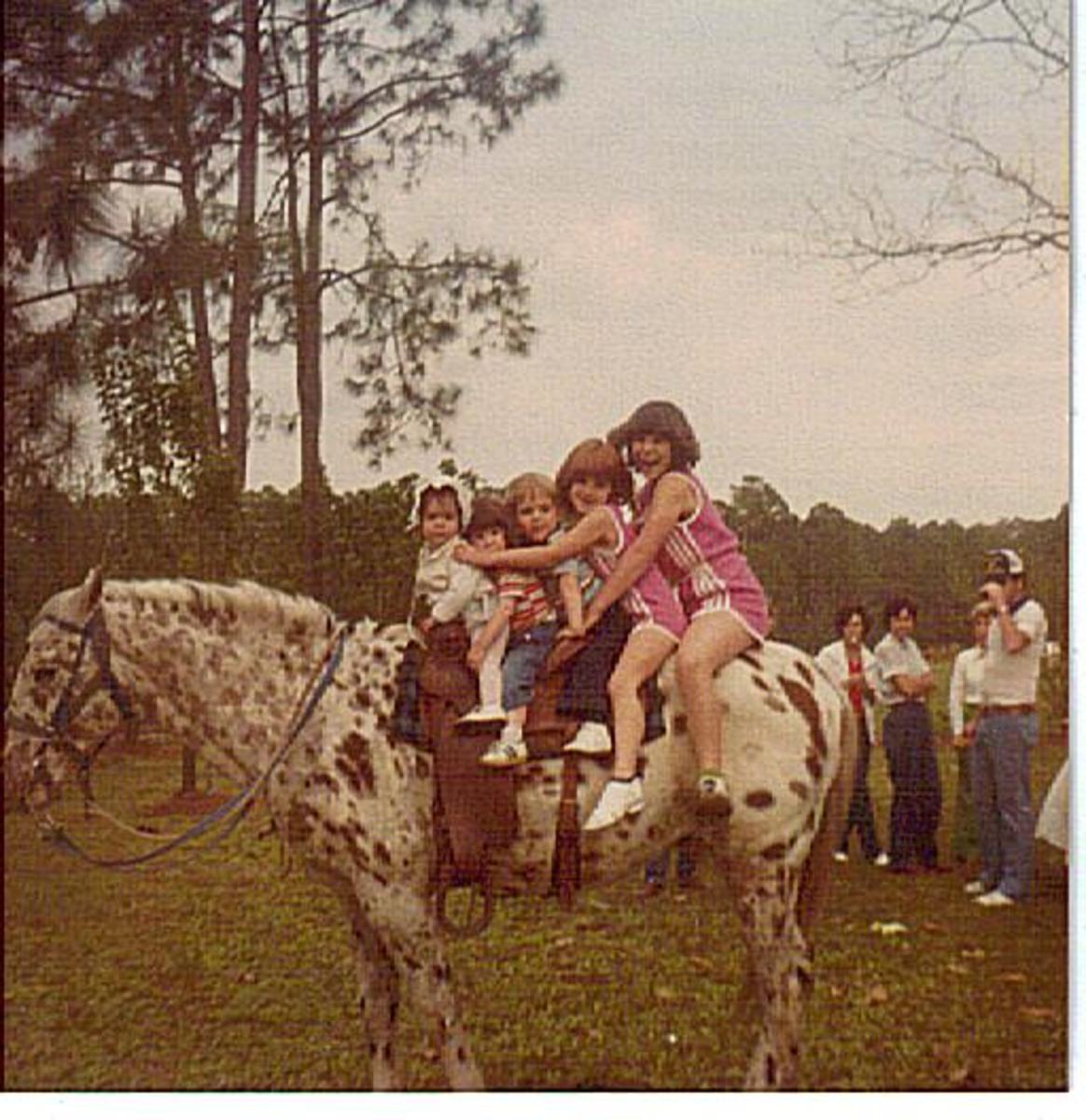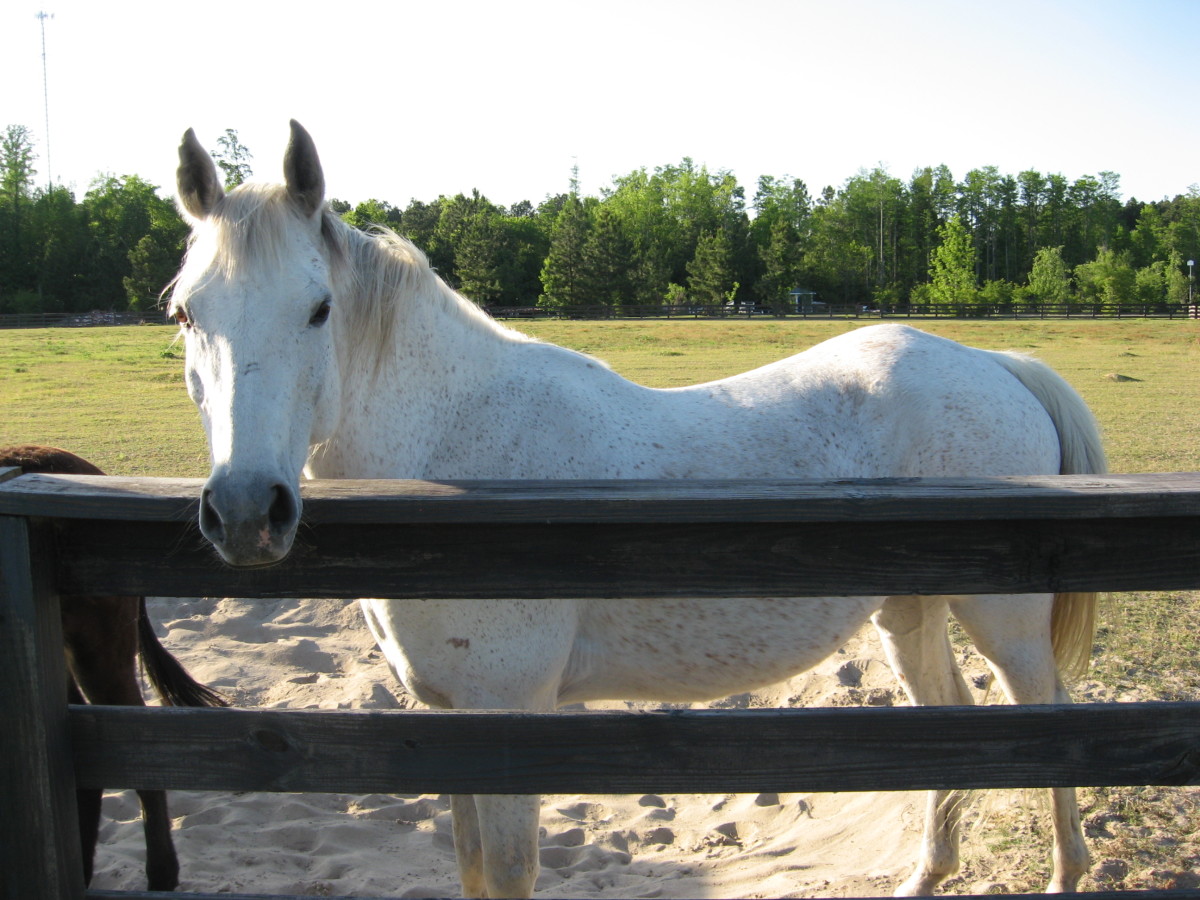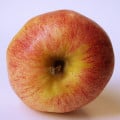Understanding Horse Color: Patterns
What Is A Pattern?
The definition of 'pattern' I am using is any genetic factor that makes part of a horse's coat turn white. This thus covers pinto and spotted horses, but also various other 'whitening' factors that are generally considered colors. I'm sorting, here, by the action of the gene, rather than the overall result.
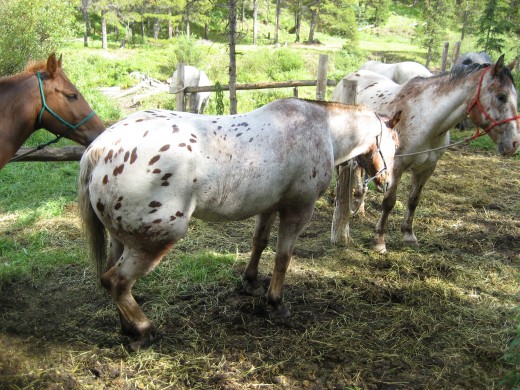
Gray
Gray is generally viewed as a color, but I'm placing it with the patterns here.
The gray gene causes a progressive lightening of the coat over time. Said lightening tends to begin around the eyes and muzzle. Almost all gray horses will eventually end up pure white.
Most gray horses are born an extremely bright or vibrant version of the color they would be if they did not have the gray gene, and start to show signs of graying as the foal coat is shed. However, graying can also start earlier or later. Very rarely, a foal can be born already gray. I also once knew a horse that remained bright, vibrant bay until the age of five, was registered as bay, but began to gray out about a year later. He grayed out very slowly and died of old age still with considerable color. The phenomenon of very late and slow graying is often called 'rose gray' and appears to be more common in Arabians.
Gray also tends to have the effect of actually darkening the skin, hence the extremely bright color gray horses are born. Gray horses have very dark gray or black skin.
Graying out can also follow a pattern. In some grays, rings of the base color or dark gray are left as the coat whitens, fading out only later. This is called 'dapple gray'. When tufts or specks of the base color remain, the horse is referred to as 'fleabitten'. Some bay based grays have points which lighten slower, and can end up white with black points. The opposite also occurs, with the mane and tail being the first to turn white.
Sadly, the grey gene carries with it an unpleasant side effect. Grey horses are far more prone to melanomas and skin cancer than other colors, for reasons that are as yet unclear.
Roan
Roan horses are sometimes mistaken for grays. (Also worth noting - there are almost no true roans in the Thoroughbred breed, but 'roan' is a recognized color in the Jockey Club. In Thoroughbreds, roan refers to a dark gray).
However, they can be readily distinguished. Gray horses often start to lose color around the muzzle and eyes. Roan, on the other hand, does not affect the points, but only the horse's body. It has the effect of mingling white and colored hair more or less evenly. This results in a speckled effect and, from a distance, a distinct lightening of the base coat. Any color of horse can be roan, although only three have specific names - strawberry roan is roan on chestnut, red roan or bay roan is roan on bay and blue roan is roan on black. Other roan horses are usually identified by simply adding 'roan' to the normal color name.
The genetics behind roan are complicated. First of all, the evidence is mounting that there are (at least) two roan genes. Classic roan, seen in many horse breeds and producing entirely even speckling of the coat appears, based off of pedigree analysis, to be homozygous lethal, resulting in early pregnancy loss. However, the Hancock line of Quarter Horses demonstrates a slightly different roan, that tends to be more uneven and looks somewhat different. Although neither roan gene has been positively identified, homozygosity markers have been discovered for the 'Hancock' roan and can be tested for, clearly indicating that this kind of roan is not homozygous lethal.
A lot more research is needed into roan.
Rabicano
Rabicano might be considered to be a lesser form of roan. Rabicano horses also have white speckles, but these are generally limited to the flanks and the base of the tail. The exact extent of the speckling varies.
Rabicano is common in Thoroughbreds, in no small part due to the superstitious belief in England in the late nineteenth and early twentieth century that 'skunk tail' horses were faster than normal ones. Because of this, the color was selected for to a degree. It is, however, seen in a number of breeds.
Pinto - Frame
There are several genes that make a pinto (patched) horse. The first one to discuss is overo or frame.
Overo is almost entirely exclusive to the American Paint, although I have also seen it (rarely) in gypsy horses in Europe. In fact, in Europe, overo is considered an undesirable pattern and horses with it tend to be removed from the breeding pool. It is, however, popular and fashionable in America.
The term frame comes from the fact that frame horses generally have white markings on their sides that do not cross over the body of the horse, giving the effect of a colored 'frame' along the back, belly, chest and buttocks. The amount of white can be extremely varied. I have seen frame horses that can be identified only by a single small spot on one side and some frames have been identified solely by genetic testing.
Back to frame being undesirable. I was raised, in England, to believe that 'overo' horses were 'weak' and should not be bred. Only as an adult did I find out that the superstition, in this case, has basis in reality.
The frame gene is a homozygous lethal gene. Foals with two copies are born pure white - and unable to digest any food due to a lack of vital pigments in the digestive tract. These days, such foals are generally euthanized. Sadly, despite cheap and readily available testing, breeders continue to cross frame horses together and risk a 'lethal white' foal. There is even some evidence that heterozygous frame horses may have weakened or compromised digestive systems.
There is, however, no reason not to breed a frame horse - as long as you breed it only to animals tested free of the gene. Even solid horses from lines with frame in them should be tested.
Pinto - Tobiano
Producing dynamically marked horses with white stripes that seem to be thrown over their necks, withers and haunches and often other markings, tobiano produces some spectacular pintos. Tobianos also often have particolored manes and tails. Homozygous tobianos often have small spots inside their white markings.
Tobiano is the pattern of the gypsy horse, commonly seen in Paints and also popular amongst those breeding high Arabian percentage pintos.
There is also a superstition associated with this gene - a belief that tobianos have better temperaments than solid horses. There are some indications that there may be at least some truth behind this, with studies showing that patched animals of all species tend to be tamer than their solid counterparts.
Pinto - Sabino
Sabino, sometimes called 'sabino overo' and, confusingly, often referred to as 'roan' in England, is most strongly associated with Clydesdale horses.
Sabino causes white legs, a white face and white splashes on the belly and flanks. There appear to be (at least) two sabino genes, only one of which has been isolated and can be tested for. This gene is dominant and causes louder markings in homozygous form. In extreme cases, a horse homozygous for the 'Sa1' sabino gene may be completely white. These horses are often called 'maximum sabino'.
There also appears to be a recessive sabino gene. This gene is responsible for the small number of 'pinto' Thoroughbreds born each year and I have also seen it in Welsh ponies.
Visually, the two forms of sabino can be distinguished. Dominant sabinos have roaning around the edge of their markings whilst recessive sabinos have sharp edged markings.
Pinto - Splashed White
The splashed white gene appears to be dominant and has not been identified. Some people 'blame' it for any excessive white on face and legs that is not associated with a pinto gene. However, this is unlikely to be the case. (I have even heard it said that blue eyes are symptomatic of splash).
True splashed white is different from sabino in that instead of the white being along the belly and flanks, it appears that somebody threw white upwards from the ground in front of its front hooves. Splashed whites generally have white front legs, partially white hind legs and white across their chest and the front part of their belly, as well as a white face and often blue eyes.
Spotted (Appaloosa)
It is not correct to call every horse that has small spots on its body 'Appaloosa' - Appaloosa is a breed and the coloring also exists in other breeds, including the Pony of the Americas, British Spotted Pony, Knabstrupper (A European carriage horse) and in colored/gypsy cobs.
Appaloosa is extremely complicated and going into all of its details would require another article (I may write one). Most horse colors are the result of a single gene. Appaloosa requires at least two genes in concert.
The basic gene is called the Lp (leopard complex) gene. On its own, it results in mottled skin, white sclera around the eyes and striped hooves. Homozygous horses have pink skin and white hooves. Some horses with Lp alone are solid, others appear to be an uneven roan, with large dark spots on the coat. This color is sometimes called 'varnish roan' or 'marble roan'.
However, there are a variety of genes, of which Sa1 is theorized to be one, that when present with Lp (but not in its absence) cause spectacular roaning and spotting.
Spotted horses are generally classed as one of the following:
1. Blanket - dark head, neck, shoulders and legs, white 'blanket' over the horse's body that may or may not have dark spots in it.
2. Snowcap - smaller white blanket, without spots.
3. Leopard - white body with dark spots all over it, possibly more concentrated in some areas.
4. Snowflake - dark body with white spots all over it.
Dark in this case refers to the base color, which can be any horse color, with modifiers or dilutions. Even more complex patterns occur when tobiano or frame are present as well.
Spotted horses tend to fade or grey out with age, and often end up white with spots. A horse with a spotted blanket may end up white with spots only over the hindquarters. Appaloosas in particular are notorious for changing color multiple times during the first few years of their lives, with owners and breeders often not knowing what the final effect will be until the horse hits four or five - and even then it only stays stable for a few years. Some animals seem completely different in winter to their appearance in summer.
The Lp gene is associated with vision problems such as uveitis or moon blindness (a progressive loss of vision with age) or true night blindness, in which affected animals cannot see at all in low light. Horses with night blindness often need some special management such as a light on at night by their feeder and water trough in the pasture. However, they are born with the condition and generally manage well.
White
It is an old saying that there is 'no such thing as a white horse'. However, it does seem that there is, in fact, such a thing as a white horse.
A mutation on one specific allele can produce a white or partially white horse. These horses may resemble sabinos, except that the white mutation does not affect the eyes, which are always dark or brown. Some of these horses may be completely white, distinguished from maximum sabino whites again by the eyes.
White appears to show up as a spontaneous mutation and has been seen in several breeds, always coming from normal colored horses. Pedigree analysis indicates that there may be several causes of white, some of which are homozygous lethal.
Very little is known about white horses (as opposed to other horses that may look white such as older greys, homozygous sabinos or horses with multiple pinto genes causing very little color).



